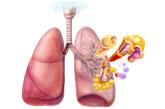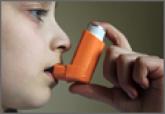Article

Asthma management: How the guidelines compare
- Author:
- Tanner Nissly, DO
- Jean Moon, PharmD
- Jason Ricco, MD, MPH
This quick guide details the similarities and differences between recommendations from the National Asthma Education and Prevention Program and...
Article

Buprenorphine to treat opioid use disorder: A practical guide
- Author:
- Tanner Nissly, DO
- Robert Levy, MD
Medication-assisted treatment is demonstrably superior to abstinence and counseling in maintaining sobriety. The authors examine this effective...
Article

Best uses of osteopathic manipulation
- Author:
- Andrew H. Slattengren, DO
- Tanner Nissly, DO
- Jodi Blustin, MD
- Andrew Bader, DO
- Erin Westfall, DO
Osteopathic manipulative treatment helps patients with lower back pain. The evidence for its effectiveness with headaches and IBS, however, is...
Article
Should You Consider Antibiotics for Exacerbations of Mild COPD?
- Author:
- Tanner Nissly, DO
- Shailendra Prasad, MBBS, MPH
Article
Should you consider antibiotics for exacerbations of mild COPD?
- Author:
- Tanner Nissly, DO
- Shailendra Prasad, MBBS, MPH
Yes. Guidelines recommend antibiotics for exacerbations in patients with moderate to severe COPD, and evidence shows they may be effective for...
Article
This Asthma Treatment Has a Lasting Side Effect in Children
- Author:
- Tanner Nissly, DO
- Shailendra Prasad, MBBS, MPH
Article

This asthma treatment has a lasting side effect in children
- Author:
- Tanner Nissly, DO
- Shailendra Prasad, MBBS, MPH
A new study finds that when children with asthma use inhaled corticosteroids, the effect on growth may not be temporary, as once thought.
